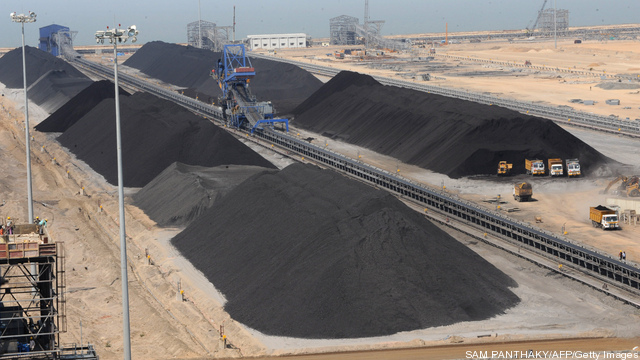
Coal producers are under fire in the US from stricter environmental regulations and stiff competition in the face of low natural gas prices, but it is far from the end of the line for this cheap and abundant fuel source.
The US has been dubbed the “Saudi Arabia of coal” for good reason, with 237,295 million tons of reserves at the end of 2010, the country held over 27% of the world’s coal, according to the BP Statistical Review of World Energy. That represents more than 240 years of supply at end-2010 production rates.
Despite this abundant supply, US coal companies experienced a difficult first quarter of 2012, with decreased demand for coal-fired power due to mild winter weather, collapsing natural gas prices and lower, but still healthy, coking coal benchmark pricing, analyst Mike Dudas wrote in a recent Stern Agee research note.
Appalachian Basin thermal coal, which is used for power generation, is currently garnering roughly $60 per ton, while metallurgical or coking coal, which is used in steel manufacturing, fetches a higher price and averaged about $235/ton in the first quarter of 2012.
Although higher-quality coking coal nets a higher return for producers, the steel industry consumes much lower total volumes than power generators. Electric utilities accounted for more than 93% of domestic coal use in the first nine months of 2011, according to the Energy Information Administration.
Producers Are Producing Less
Coal production is down across the country, recently falling below the five-year average, and is 10% below year ago levels.


Through conversations with industry contacts, Sterne Agee analysts determined that current US thermal coal market conditions have reached a historic low point. Weekly US electricity output has dropped five to seven percent so far this year and coal’s share of the US power generation market has dropped below 40%.
Given these bleak conditions, several coal producers including Consol Energy, Royal Coal and Alpha Natural Resources, have idled Appalachian basin mines, according to EIA.
Going forward, most incremental production cutbacks are likely to come from the Powder River Basin, though this could be achieved by reducing the number of mining shifts, as opposed to idling entire mines, writes Dudas.
Greener Pastures
The US exports coal to international markets, and given current frosty domestic fundamentals, many coal producers are looking to export more. Deliveries to Asian markets helped fuel a slight 2011 US coal production increase. Coal markets in Asia were disrupted last year when Australia – the world’s largest coal exporter – experienced severe flooding that shut in several mines.
Australian production has returned to near pre-flood levels, says the EIA, which has decreased demand for US coal on the world market. However, producers have fewer buyers for their product within the US and stockpiles are above the seasonal average exiting winter, limiting options and strengthening the attractiveness of exports.
For more about international coal consumption trends and the role of the US as an exporter, read here.
Infrastructure bottlenecks are one of the key impediments to exporting greater volumes of coal from the US. Coal companies are moving forward with export terminal expansion, but competition for rail space – partly due to Bakken oil production growth that often moves by rail rather than pipeline – remains a challenge. Roughly 60% of US coal exports originate from the East Coast, specifically from Maryland, Massachusetts, New York, Virginia, Pennsylvania, Maine and Vermont.
Over the longer term, the outlook for US coal producers could improve if domestic energy demand increases, export infrastructure grows, global steel production increases and international coal prices strengthen.
